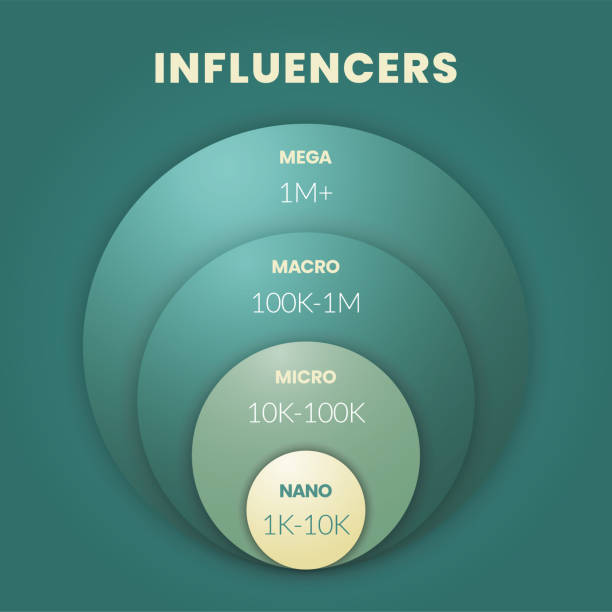As the social media landscape continues to evolve at breakneck speed, staying ahead of the curve is no longer optional — it’s essential. With 2025 upon us, digital marketers, brands, and influencer marketing agencies are asking: what are the most important social media trends for 2025?
If you’re running influencer campaigns, developing digital strategies, or simply want to stay relevant in an ever-shifting space, you need to pay close attention to these trends.
In this article, we’ll unpack the top 10 social media trends for 2025, explain why they matter, and share how your brand can leverage them to stay competitive and connected with your audience.
Key Takeaways
- Social commerce and short-form video are reshaping how consumers discover and purchase products.
- AI-powered tools are making influencer marketing more efficient and insightful.
- Authenticity, live streaming, and community-driven content are dominating consumer preferences.
- Micro and nano influencers offer better engagement and affordability.
- B2B influencer marketing is growing rapidly, especially on LinkedIn.
- Ethical, purpose-driven content is now a baseline expectation for audiences.
- Long-term partnerships between brands and influencers are proving more effective than one-off collaborations.
Top 10 Social Media Trends to Watch in 2025
1. Social Commerce Becomes a Dominant Force
Social commerce isn’t just a buzzword anymore — it’s rapidly reshaping how consumers discover and purchase products online. Platforms like Instagram, TikTok, and Facebook are fine-tuning their in-app shopping experiences, and influencer-led product discovery is at an all-time high.
Statista predicts the global social commerce market will surpass $1 trillion by 2028, and with Gen Z already relying on social media more than Google for product discovery, brands need to prioritise shoppable content and influencer partnerships that feel organic.
2. The Rise of AI-Powered Influencer Marketing Tools

AI in influencer marketing is making campaign management smarter, faster, and more personalised. From AI-driven content generation to campaign analytics and influencer discovery tools, brands can now optimise their strategies with unprecedented precision.
Expect to see more AI-powered platforms that assist with audience analysis, predictive performance analytics, content ideas, and automated reporting.
3. Authentic, Raw, and Relatable Content Wins Over Perfection
2025 audiences are done with overly polished, scripted content. In a world increasingly touched by AI, social media users crave realness. A Rakuten study found that 60% of users value authenticity from influencers, and 85% will unfollow anyone they perceive as fake.
Brands should focus on partnerships with creators who are unfiltered, honest, and willing to share both wins and struggles. Imperfect lighting, spontaneous live streams, and behind-the-scenes content resonate deeply with modern audiences.
4. Short-Form Video Continues to Dominate
The short-form video revolution isn’t slowing down. TikTok, Instagram Reels, and YouTube Shorts have changed how audiences consume content, with attention spans dwindling and snackable, fast-paced videos taking centre stage.
In 2025, short-form videos remain the most engaging content type. Brands that master vertical video storytelling will thrive, especially if they use strong hooks within the first three seconds.
5. Micro and Nano Influencers Continue to Drive Engagement

Forget chasing celebrity influencers — micro (10k-99k followers) and nano (1k-10k followers) creators are proving they deliver better engagement rates and higher trust with niche audiences.
A recent Influencer Marketing Hub report revealed that consumers rate citizen and nano influencers as second only to industry experts when it comes to influencing purchase decisions. Their audiences are hyper-loyal, and their authenticity is often unmatched.
6. Live Streaming and Social Shopping Explode in Popularity
Live streame is making a powerful comeback, now revolutionising the world of eCommerce. Live shopping events on platforms like TikTok, Instagram, and Facebook offer audiences real-time, interactive shopping experiences hosted by trusted influencers.
Consumers love live shopping because it feels more authentic than traditional advertising. It gives them a chance to ask questions, see products in action, and make impulse purchases with the social proof of live commentary.
7. Online Communities Become Marketing Gold
In a digital world where audiences crave connection, online communities have never been more important. Influencers are increasingly creating private Facebook groups, Discord servers, and exclusive newsletters to foster deeper conversations and loyalty.
For brands, tapping into these micro-communities is a golden opportunity to engage directly with engaged, niche audiences.
8. B2B Influencer Marketing Takes Off on LinkedIn
It’s not just B2C brands riding the influencer marketing wave. B2B influencer marketing is growing fast, with LinkedIn introducing more video tools and creator-friendly features. Professionals are increasingly influenced by subject-matter experts, thought leaders, and industry-specific creators.
Expect more B2B influencer campaigns featuring webinars, podcasts, whitepapers, and LinkedIn Live events.
9. Ethical and Purpose-Driven Content Matters
Socially conscious, ethical, and inclusive content isn’t optional anymore — it’s expected. Gen Z and Millennials prefer brands that stand for something, and social media is the ideal platform to showcase those values.
In 2025, sustainability messaging, DEI initiatives, and mental health awareness campaigns will see higher engagement and brand favourability.
10. Influencer-Brand Long-Term Partnerships Are on the Rise

Gone are the days of one-off sponsored posts. Long-term brand-influencer relationships are trending because they build stronger audience trust and drive higher ROI.
Long-term collaborations deepen audience-brand affinity, deliver more authentic endorsements, and provide influencers with stable income, leading to better content quality and consistency.
Conclusion
The social media landscape in 2025 is dynamic, fast-moving, and full of opportunity. By keeping a close eye on these trends and partnering with the right influencers, brands can cut through the noise, build meaningful connections, and drive serious ROI.
If you’re ready to future-proof your influencer marketing strategy, get in touch with influencers2c — Australia’s trusted influencer marketing agency — and let’s make your next campaign a trendsetter.
Frequently Asked Questions
What are the social media trends for 2025?
The top social media trends for 2025 include the rise of social commerce, short-form video dominance, AI in influencer marketing, micro and nano influencer partnerships, live shopping, and the growing importance of authentic, community-driven content.
What is the most popular social media platform in 2025?
As of early 2025, Facebook remains the largest platform by monthly active users, followed by YouTube, Instagram, TikTok, and LinkedIn. However, platform popularity varies by demographic and content type.
Why is authenticity important in influencer marketing in 2025?
In a digitally saturated, AI-driven world, audiences crave relatable, human, and transparent content. Authentic influencers build deeper trust, resulting in higher engagement rates and better conversion outcomes.
Is influencer marketing still effective in 2025?
Absolutely. The influencer marketing industry is projected to reach $32.55 billion in 2025, with more brands investing in influencer-led social commerce, community building, and content marketing strategies.
How can brands stay ahead of social media trends?
Brands should partner with a forward-thinking influencer marketing agency like influencers2c, stay active on platform updates, use social listening tools, and test new formats like live shopping and AI-generated content.










